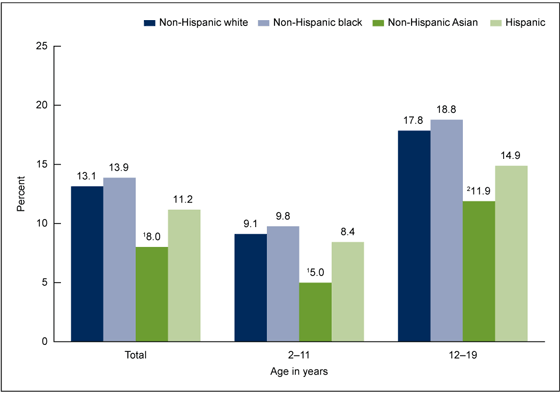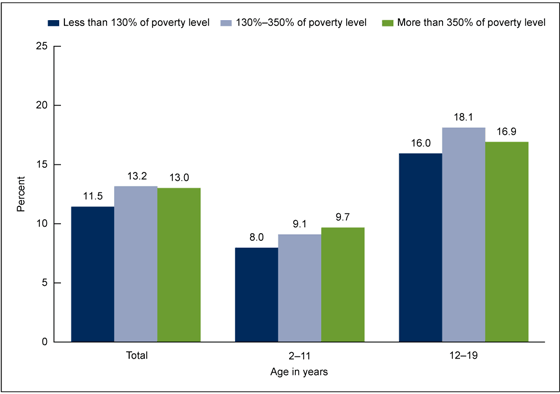http://www.cdc.gov/nchs/data/databriefs/db213.htm
 |
Did the percentage of calories consumed from fast food differ by race and Hispanic origin?
Non-Hispanic Asian children and adolescents aged 2–19 consumed significantly fewer daily calories (8.0%) from fast food compared with non-Hispanic white (13.1%), non-Hispanic black (13.9%), and Hispanic (11.2%) children and adolescents (Figure 3). Among children aged 2–11, non-Hispanic Asian children consumed an average of 5.0% of their daily calories from fast food compared with non-Hispanic white (9.1%), non-Hispanic black (9.8%), and Hispanic (8.4%) children. Among adolescents aged 12–19, non-Hispanic Asian adolescents consumed a lower daily percentage of calories (11.9%) from fast food than non-Hispanic white (17.8%) and non-Hispanic black (18.8%) adolescents. However, the observed difference in average daily calories consumed from fast food between non-Hispanic Asian and Hispanic adolescents was not significant.
|
 |
Did the percentage of calories consumed from fast food differ by poverty status?
No significant difference was seen by poverty status in the average daily percentage of calories consumed from fast food among children and adolescents aged 2–19 (Figure 4). There were no differences by poverty status among either younger children (aged 2–11) or adolescents (aged 12–19).
|




Aucun commentaire:
Enregistrer un commentaire